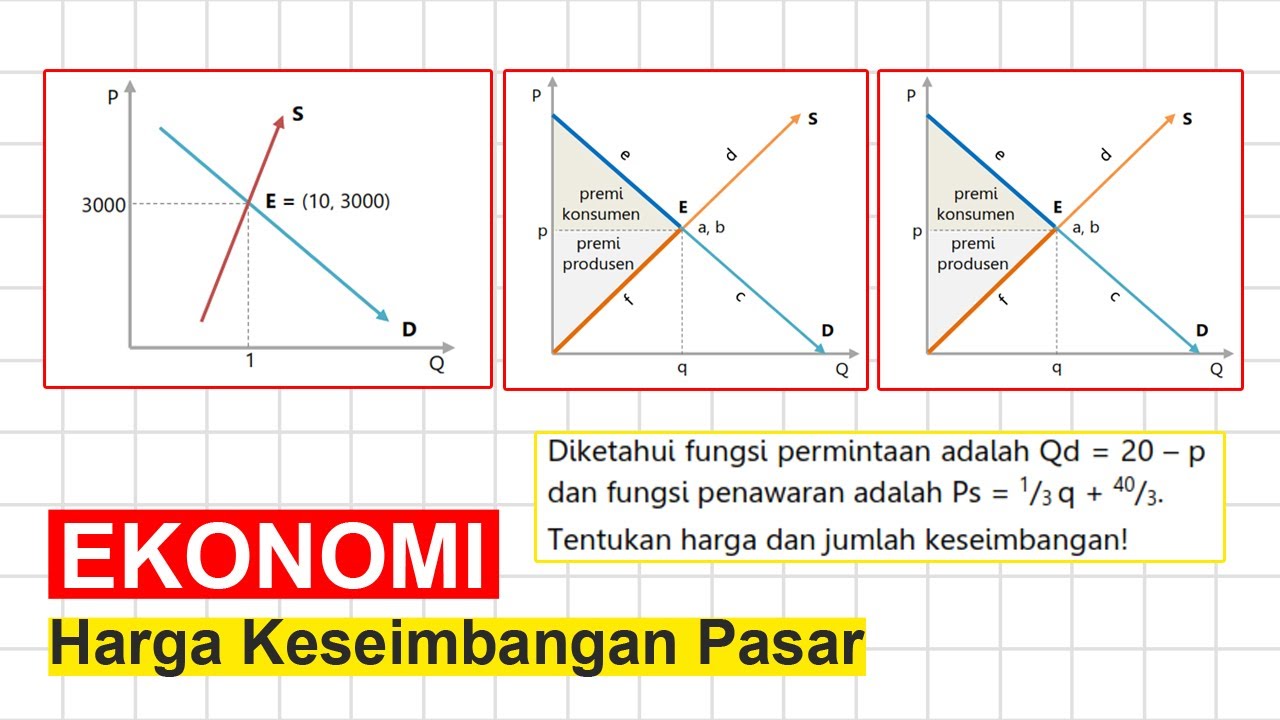External Benefits
Summary
TLDRIn this video, Alex Tabarrok explains the concept of external benefits, focusing on how they impact market equilibrium. Using the example of flu shots, he illustrates how individuals receive less benefit from the shot compared to the social benefit it generates. This leads to underconsumption, resulting in a deadweight loss. To correct this market inefficiency, Tabarrok suggests a Pigouvian subsidy, which shifts the demand curve to match the social value. By setting the subsidy equal to the external benefit, the market can reach an efficient equilibrium.
Takeaways
- 💉 External benefits are benefits received by people other than the consumers or producers involved in the market transaction.
- 🦠 A flu shot is an example of a good with external benefits, as it reduces the chance of spreading the flu to others, not just the vaccinated person.
- 💵 The problem with goods that have external benefits, like flu shots, is that the individual bears all the costs but only receives some of the benefits.
- 📈 The social value of a flu shot is higher than the private value, which leads to an under-supply in the market.
- 📊 In a market equilibrium without intervention, the quantity of flu shots is lower than what is socially optimal due to the external benefits not being fully accounted for.
- 🔵 The social value of the last flu shot consumed at market equilibrium exceeds its cost, indicating underuse and resulting in a deadweight loss.
- ⚖️ One method to address underuse in goods with external benefits is through a Pigouvian subsidy.
- 🤑 A Pigouvian subsidy shifts the demand curve up by reducing the cost to consumers, encouraging them to buy more of the good.
- 🎯 When the subsidy is set equal to the external benefit, the market equilibrium aligns with the efficient equilibrium, correcting the underuse.
- ✅ The key conclusion is that when a good has external benefits, the market produces too little of it, but a properly set subsidy can help achieve the efficient level of output.
Q & A
What is an external benefit?
-An external benefit is a benefit received by people other than the consumers or producers involved in a market transaction. It refers to a positive effect on bystanders.
Can you provide an example of an external benefit?
-A common example is a flu shot. When one person gets vaccinated, it reduces the likelihood that they will transmit the flu to others, benefiting those who haven't been vaccinated.
Why does a flu shot generate external benefits?
-A flu shot reduces the likelihood of both the individual and others contracting the flu. The vaccinated person bears the full cost of the vaccine but doesn’t capture all the benefits, as others indirectly benefit from reduced transmission.
What is the problem with the market equilibrium for goods with external benefits like flu shots?
-The market equilibrium leads to an under-supply of goods with external benefits because the consumers only consider their own private benefits and not the wider social benefits.
What is the difference between private and social value in the context of a flu shot?
-The private value refers to the benefit the individual receives from the flu shot, like avoiding the flu. The social value includes both the private value and the additional benefit to others, like reducing the spread of the flu.
What happens when the social value is higher than the private value for a good?
-When the social value is higher than the private value, the good is undersupplied in the market, resulting in a deadweight loss. Fewer transactions happen than are socially optimal.
What is deadweight loss in the context of external benefits?
-Deadweight loss refers to the valuable transactions that do not occur because the market produces too little of a good that has external benefits, like flu shots.
What is a Pigouvian subsidy and how does it address underuse of goods with external benefits?
-A Pigouvian subsidy is a government payment that encourages consumption of goods with external benefits. It raises demand by reducing the effective cost to consumers, aligning the private value with the social value.
How does a Pigouvian subsidy correct the market equilibrium?
-The subsidy increases the private value of the good by the amount of the external benefit, shifting demand up. When set correctly, the market equilibrium becomes efficient, with supply and consumption matching the social optimum.
What is the main takeaway about the relationship between external benefits and market equilibrium?
-The key takeaway is that markets undersupply goods with external benefits because individuals don’t consider the benefits to bystanders. A Pigouvian subsidy can correct this by incentivizing more consumption, aligning the market equilibrium with the socially efficient level.
Outlines

هذا القسم متوفر فقط للمشتركين. يرجى الترقية للوصول إلى هذه الميزة.
قم بالترقية الآنMindmap

هذا القسم متوفر فقط للمشتركين. يرجى الترقية للوصول إلى هذه الميزة.
قم بالترقية الآنKeywords

هذا القسم متوفر فقط للمشتركين. يرجى الترقية للوصول إلى هذه الميزة.
قم بالترقية الآنHighlights

هذا القسم متوفر فقط للمشتركين. يرجى الترقية للوصول إلى هذه الميزة.
قم بالترقية الآنTranscripts

هذا القسم متوفر فقط للمشتركين. يرجى الترقية للوصول إلى هذه الميزة.
قم بالترقية الآن5.0 / 5 (0 votes)






